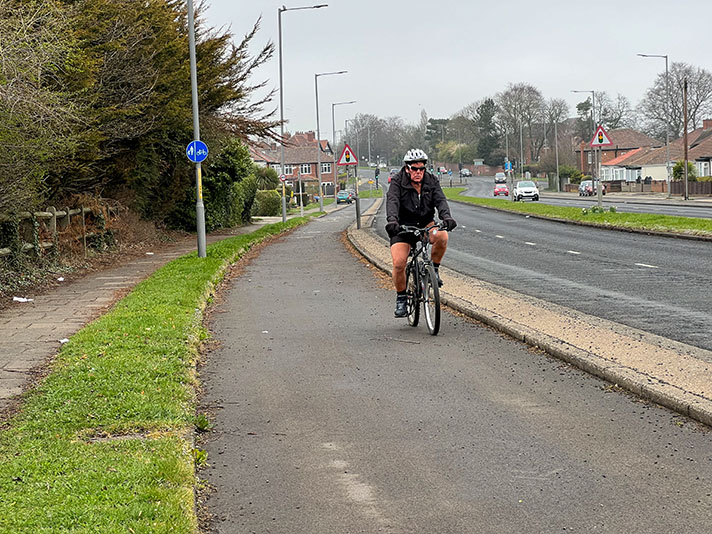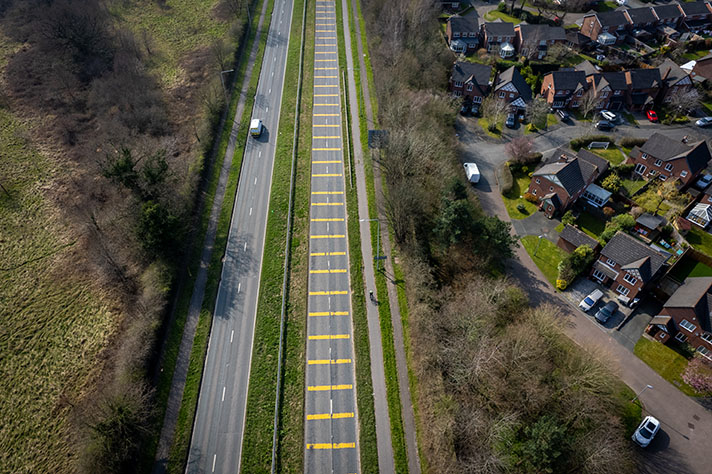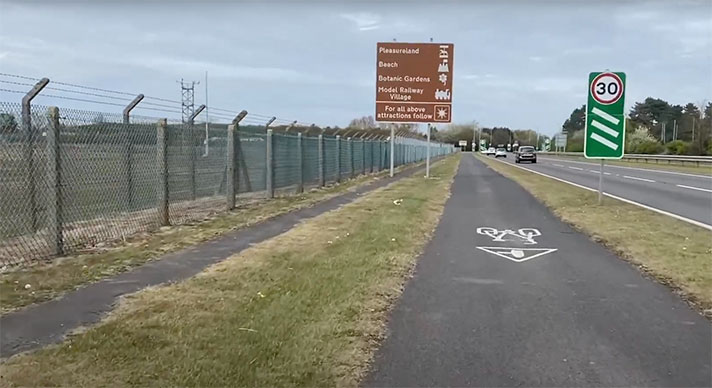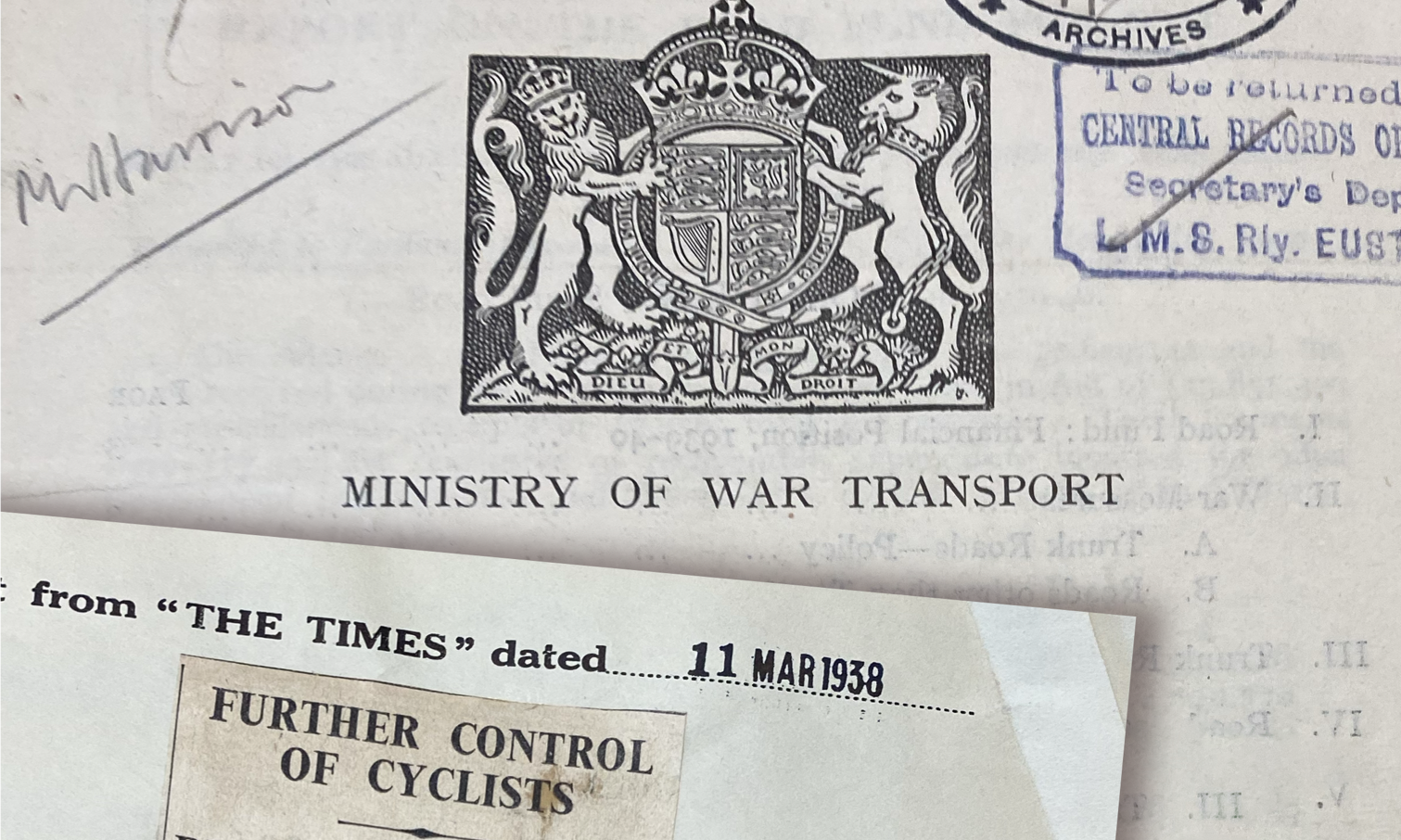
MINISTRY OF TRANSPORT FUNDING
According to the County Surveyors Association in 1938, the cost of building a 120-ft dual carriageway with footpaths and cycle tracks was £221,600 per mile. The cost of a “motorway” — without cycle tracks and footpaths — was £60,000 per mile. Despite these more significant costs, between 1935 and 1940, the Ministry of Transport would generally only fund road schemes that featured cycle tracks.
Local authorities could generally only afford to build roads with monetary support from the Ministry of Transport. Main roads attracted construction grants of 60 percent of the total costs. However, in August 1935, the MoT increased this grant up to 75 percent but only for those projects building dual carriageways with cycle tracks. The grant was soon after that increased to 85 percent. (And during wartime, the grant could be as high as 100 percent.)
Transport minister Leslie Hore-Belisha told Parliament in 1935, “I am prepared to make grants at rates in excess of the normal from the Road Fund for the improvement of trunk roads and, where circumstances warrant , the provision of dual carriageways and cycle tracks.”
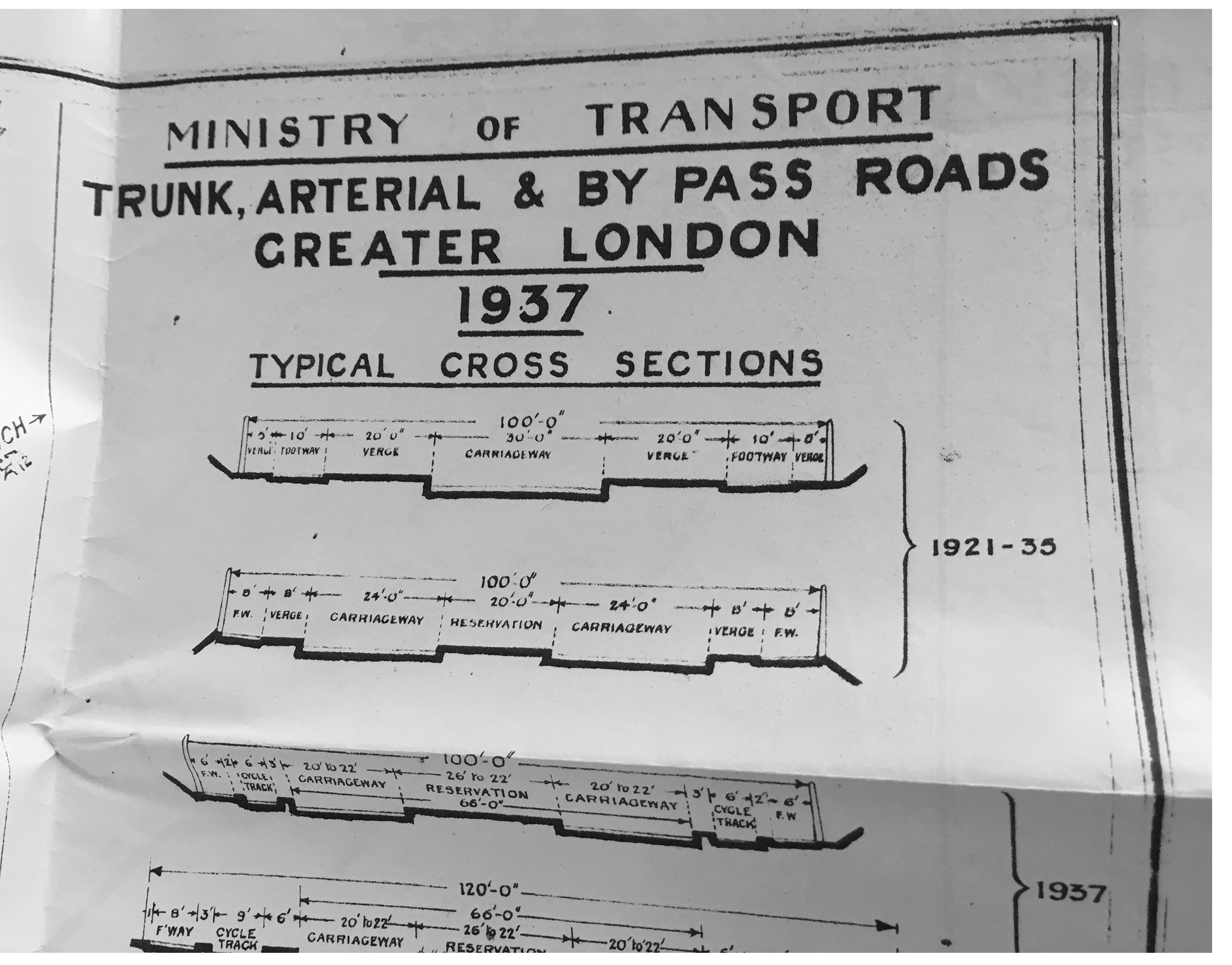
Local authorities that submitted plans that omitted cycle tracks risked their plans being rejected, a fact that did not go unnoticed.
In 1939, Gloucestershire County Council widened part of Gloucester Road North at Filton, near Bristol, adding duel carriageways and cycle tracks. The local authority hadn’t wanted to install cycle tracks but suspected it would not have qualified for the MOT’s full road building grant without them.
Four years earlier, the county surveyor had drawn up plans for a 100-ft-wide road, but in 1937, the council’s highway committee heard that the MoT would only “proceed with the widening of the existing trunk road provided the proposal was reduced in cost to provide for an 80-foot road only, with a 30-foot central carriageway and two cycle tracks and footpaths.”
According to a news report, the committee’s vice-chairman and the county surveyor “agreed that the bigger road was to be preferred to the 30-foot carriageway with paths and cycle tracks.”
However, the report continued, “if they upset the Ministry they might not get anything at all.”
“So,” stressed the committee’s vice-chairman, “it might be advisable to accept this in the hope [the MoT] will get on with it.”
A Kent County Council alderman raised similar concerns two years later who advised the roads committee deliberating on a bypass that “if you decide … to have a road without cycle tracks and footpaths you may not get any grant from the Ministry.”

NOTES
[1] Statement by Lord Howe, HL Deb 23 November 1938
https://api.parliament.uk/historic-hansard/lords/1938/nov/23/roads-and-traffic#S5LV0111P0_19381123_HOL_26
[2] The Times, 2 August, 1935.
[3] Statement in Parliament by transport minister Leslie Hore-Belisha, Thursday Aug 1, 1935. The Scotsman, Friday 02 August 1935
[4] Gloucester Journal, 11 September 1937.
[5] Alderman Monins added: “As far as cycle tracks are concerned, my only experience has been as a spectator on the Great West Road, and I do think that anyone who uses that road will realise that cycle tracks are being used more and more every week.”
Chatham News, 28 July 1939.

